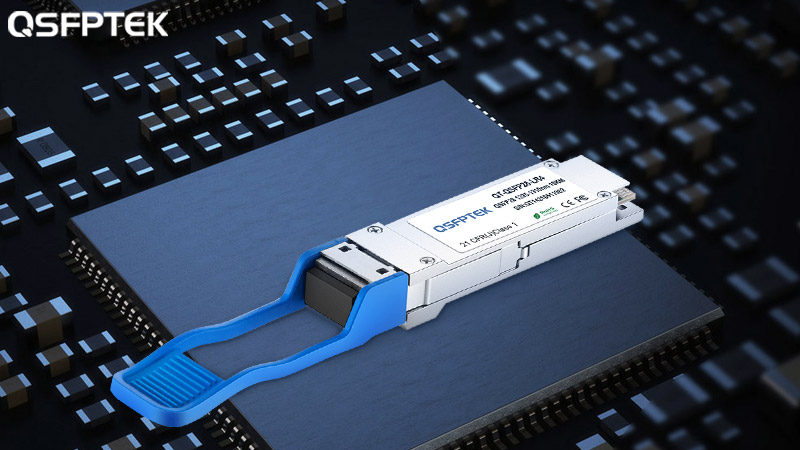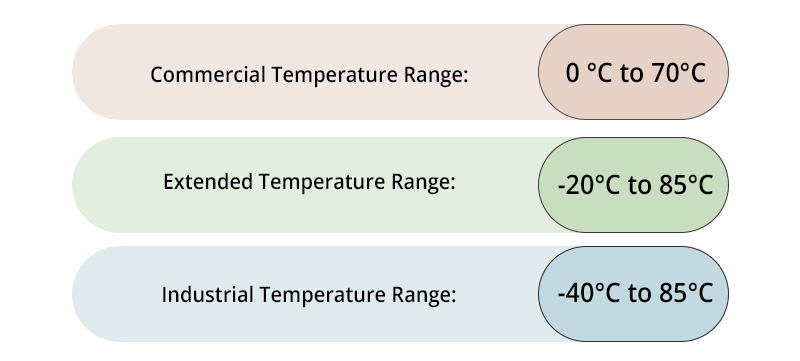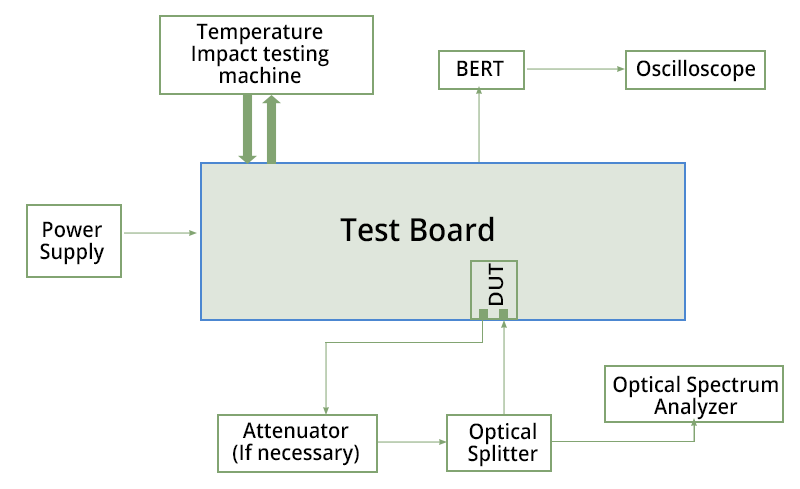What is The Operating Temperature of The Optical Transceiver
Before each QSFPTEK optical transceiver is handed over to the user, it is subjected to a series of rigorous tests, including of course temperature testing. When the optical module is not in a defined operating temperature environment, this module may experience high latency and transmit data volumes below the rated rate. So that we usually consider temperature testing to be the most important part of the whole testing process.
Do you know the operating temperature range of optical transceivers, how the operating temperature affects the operation of optical modules, and why the operating temperature has such a big impact on optical transceivers? By reading this article, you will have enough understanding of these issues.

Figure 1: 40GBASE-LR4 Optical Transceiver
What's The Meaning of Optical Transceiver Operating Temperature?
The temperature range of each optical transceiver dictates that they can only operate within a specific range of values. Different optical modules have different types, form factors, applications, and manufacturers, all of which affect the operating temperature range of an optical module. Generally, we classify the application range of optical modules into three different range levels according to their application scenarios.
Commercial Temperature Range (COM): 0 °C to 70°C
Extended Temperature Range (EXT): -20°C to 85°C
Industrial Temperature Range (IND): -40°C to 85°C

Figure 2: 3 Classify Transceiver Temperature Range
The vast majority of optical modules are deployed in a small home or office computer, and in large data centers and off-the-beaten-path locations such as deserts, mountains, river valleys, and oceans. When optical modules are deployed in these places, we have to consider the operating environment of these optical modules, choosing an industrial transceiver is the best choice. When purchasing optical modules, suppliers will provide detailed specification sheets for their products, so it is recommended to choose the right optical transceiver in these three temperature ranges after considering the actual application.
Why Do Optical Modules Need to Operate Within The Right Temperature Range?
This part will discuss what happens when a transceiver module does not operate within the rated operating temperature range. When not operating within the operating temperature range, the optical module will generate more signal failures, and the module will be damaged when severe.
When the optical module is within an environment that exceeds the operating temperature, first of all, its operating power will become larger and the receiver inside the optical module will have a large error when processing the received signal, which will lead to the failure of the optical module, when the temperature reaches a point where the optical module cannot withstand it, the optical module will be burned up. Within the operating environment, a temperature control system can be added, usually, the temperature control system can carry out real-time monitoring and compensation, through the temperature control system, the extinction rate and luminous power of the optical module can become stable, so as to achieve the normal working effect.
When the temperature of the working environment where the light module is located is lower than the rated working temperature range, the operation of the light module will also become unstable. Generally speaking, as long as the working environment where the optical module is located exceeds 0 degrees Celsius, together with the heat generated by the operation of the optical module itself, the optical module will not encounter the bad situation of too low working temperature. However, when it comes to deploying optical modules in extreme application scenarios, choose the right industrial optical modules and avoid using commercial optical modules for extreme applications.
How QSFPTEK Performs Optical Transceiver Temperature Testing
Generally, transceivers in the commercial temperature range are sufficient for data centers, while Industrial or Extended temperature range transceivers are recommended for outdoor use. Every QSFPTEK transceiver is subjected to temperature testing procedures, while Industrial and Extended modules are subjected to more stringent and extreme temperature cycling tests, and special components are generally built into these modules to pass these tests. Because of the additional special components, Industrial and Extended transceivers are more expensive. Only by undergoing extreme temperature testing can the high quality of Industrial transceivers and Extended transceivers be guaranteed. QSFPTEK's temperature testing process for transceiver modules includes.
-BER testing
-Calibration - Eye-diagram analysis & voltage/current measurements
-Optical spectrum analysis
-Aging & reliability testing
-Switch testing

Figure 3: QSFPTEK Temperature Test Process
Note: The DUT means device under test, it can be any module that is undergoing a test process. The temperature impact testing machine can change the temperature of DUT, and testing of BER, calibration, and spectrum at the same time.
What Will Affect the Transceiver Module Working Temperature?
Substandard Manufacturer Workmanship
Manufacturers who are not strict about quality control will use poor quality materials and to the very poor design of the module internals. These two factors will directly cause the operating temperature of the optical module to become unstable, such as poor heat dissipation performance, which will often be accompanied by abnormal temperatures during use, leading to various unstable failures during use. The solution to this problem is also very simple, choose a trustworthy supplier like QSFPTEK, and each of our modules will undergo a rigorous temperature test before leaving the factory.
Using a Second-hand Modules
Some small data centers, or some users may think that using a used module will be more cost-effective. When we use a used module, it may work fine in some cases, and have a lower price, but since transceiver modules have a limited lifetime, second-hand transceivers are very susceptible to temperature-sensitive problems when the parts inside the module are used for a long time. When we use a brand new module that meets the standard, it can operate in the temperature range of 0-70℃, while when we start using a used module, it is very likely that it will not reach this standard, and when your used module is damaged, the cost of replacement and repair will be much higher than the money saved as mentioned earlier. Therefore, I recommend using brand new optical modules from the beginning to avoid the subsequent costs of using used modules.
Extreme Working Environment
Commercial optical modules are generally used in homes, offices, data centers, where the operating temperature is generally in line with the normal temperature range of optical modules, while if they are deployed in extreme environments such as deserts, oceans and mountains, their optical power and sensitivity will be damaged after a long period of use.
Conclusion
After this article, we know the operating temperature of the optical module and what factors affect the operating temperature of the optical module. Using a compliant transceiver module will reduce the number of failures in the operation of the transceiver module and ensure the stability of the module. each transceiver module provided by QSFPTEK has undergone rigorous temperature testing to ensure the high quality and excellent operational performance of each module. If you want to know more, please contact QSFPTEK Technical Support via [email protected].










